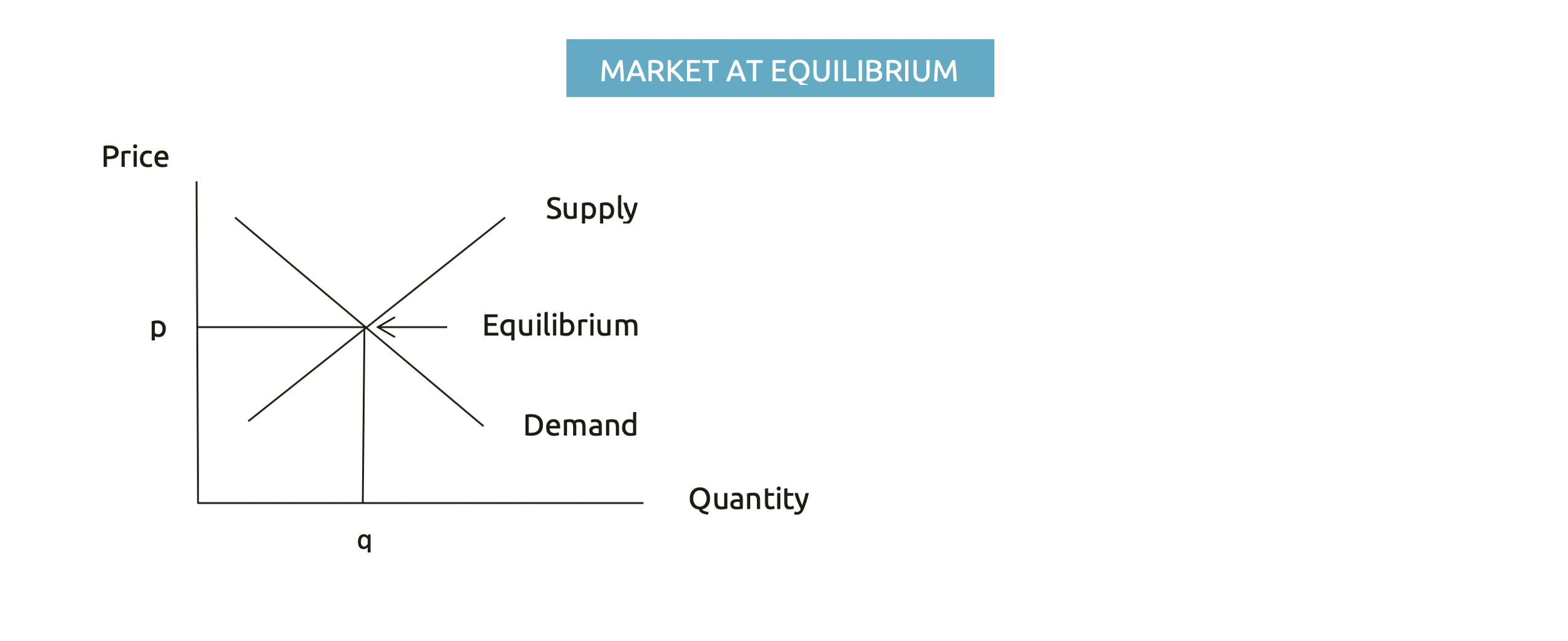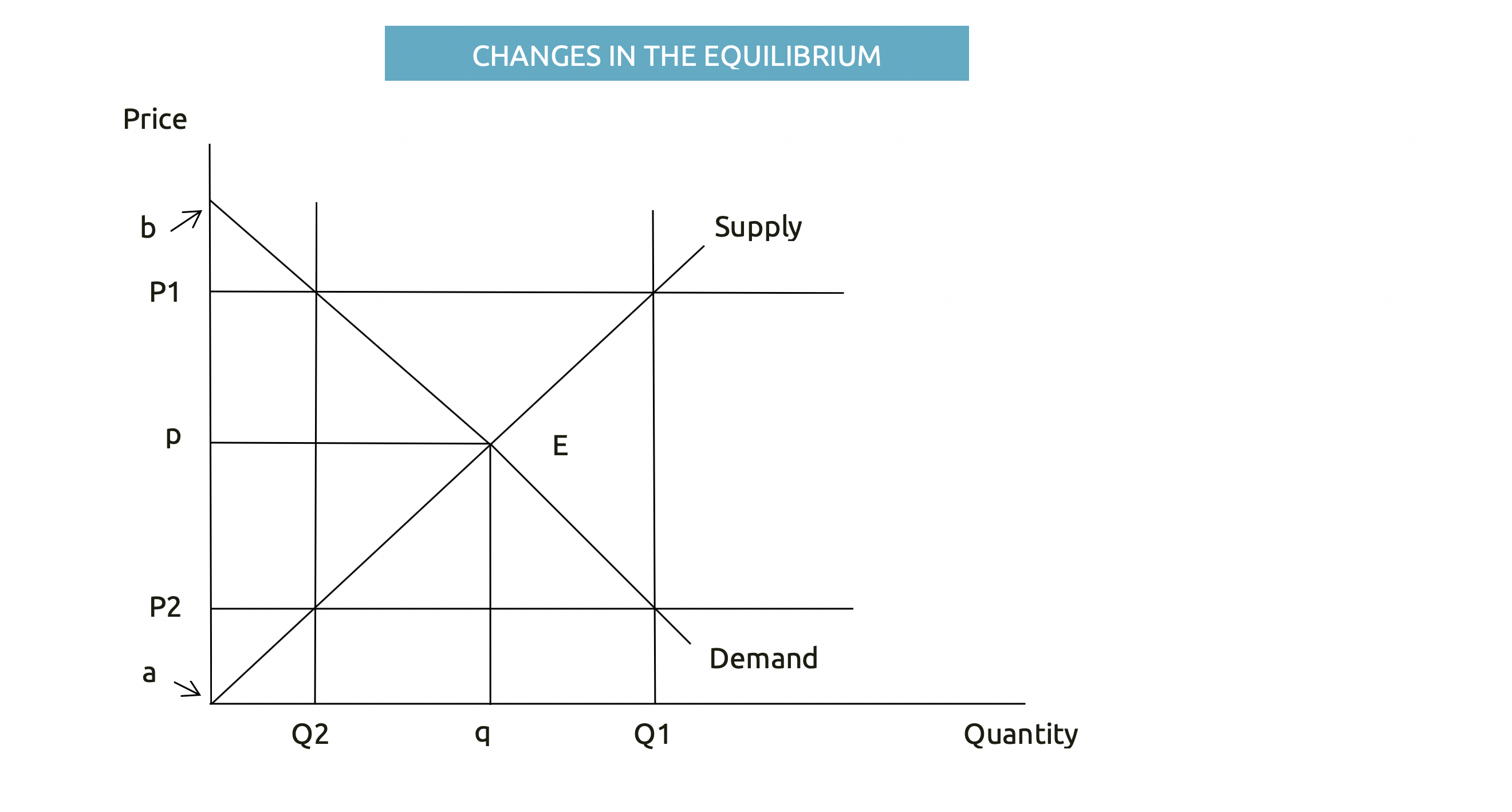Many questions in Economics are about conditions that occur at/around ‘equilibrium’, and most of the students I encounter, although they can draw the graph/s, later fail to interpret/analyse them correctly in order to earn full marks.
The following illustrations will help you grasp the overall concept behind economic graphs and how we can use them to interpret most economic problems.
Many graphs in economics focus on the first quadrant (probably since most values are positive/realistic figures; we tend to avoid talking about -$5 since it doesn’t exist in physical quantities; it’s either I have money or I don’t!)

Points to note:
- Since we need to make a choice that combines what is available (Supply) and what is required (Demand), the equilibrium point must be where these two ‘forces’ meet (as illustrated).
- Prices increase vertically (up/down) while Quantities increase horizontally (from left to right).
- Consumers love lower prices; that is why the demand curve slopes downwards (from higher to lower prices) from left to right (fewer quantities to more)
- Suppliers make more profits when prices are high, which is why the Supply curve rises from left to right denoting more goods supplied as prices rise, and fewer units when prices fall.

Points to note:
- P1 denotes a price above equilibrium; high prices encourage producers to supply more, leading to excess supply that outstrips demand (since not all producers are able to anticipate future demand).
- When price rises from p to P1, consumers hate price increases; they will start demanding only Q2 (down from q) while suppliers will be very happy and will increase supply from q to Q1. The difference between Q1 and Q2 is the excess supply.
- P2 shows the price that is lower than the prevailing equilibrium; it discourages suppliers and leads to very low production and shortages.
- When prices fall from p to P2, consumers will love that and demand more. Quantity demanded will increase from q to Q1 but suppliers will incur heavy losses if they produce more at lesser prices; they will reduce quantity supplied from q to Q2 and the difference between Q1 and Q2 represents a shortage in the industry.
Leave a Reply